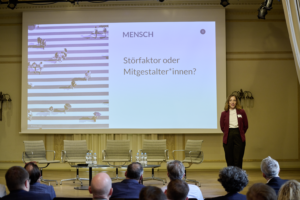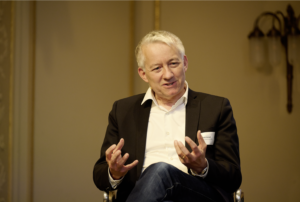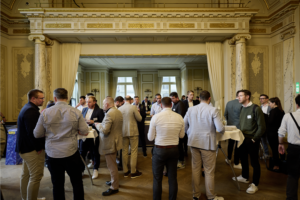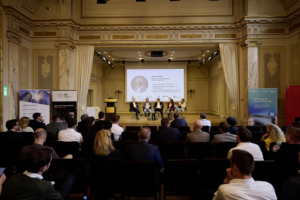Review of the 98th Swiss Real Estate Talk
In the run-up to a major anniversary, the Swiss Real Estate Talks celebrated another premiere: they took place in Bern for the first time. Under the title "Housing crisis - what next", the 98th edition focused on exciting concepts for densification and the hope that climate pressure will ultimately advance the housing issue.
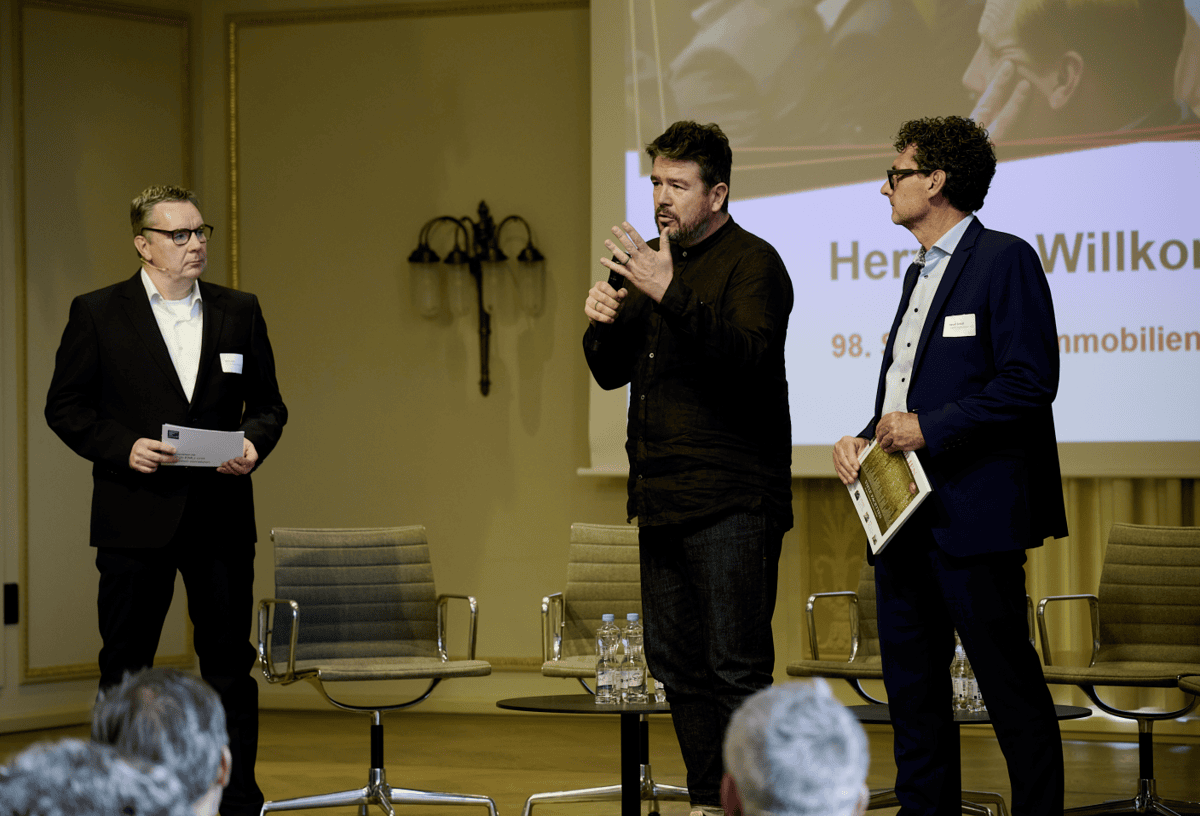
Switzerland is doing well, the signs are pointing to growth, but there is one problem: there is a shortage of apartments where people want to live. The hotly debated housing crisis is a topic that is currently at the center of public interest in the real estate industry. So it's not a bad topic to discuss with the Swiss Real Estate Talks to go to Bern for the first time. This was done in cooperation with the Bern University of Applied Sciences and its real estate lecturer Boris Szélpal, who believes that a dialog in and with the real estate industry also belongs in the federal city: A dialog in and with the real estate industry also belongs in the federal city, where a lot of exciting things are happening. And so a very lively and sometimes controversial discussion unfolded on the podium of the Bern Casino, within sight of the Federal Palace. But one idea was clear: There is no way around densification. It is clear that space in cities should be used more efficiently. But how should densification take place, how can it succeed?
It's the clever mix that makes the difference
The architect's perspective sometimes opens up inspiring perspectives on real estate issues. Andrej Bissig from the Von Graffenried Bissig office in Bern kicked off the event by showing what the state of the art currently looks like when it comes to densification in architecture. It is about liveliness through mixed use, about ingenious ways of achieving successful coexistence despite density - or precisely through it. Bissig spoke of the overlapping of uses, their distribution on different levels. There are pioneering examples of this in Switzerland, such as the Kalkbreite project in Zurich, which was completed in 2014 and is characterized by the juxtaposition and overlapping of a wide variety of uses as well as spacious communal and meeting areas. On a much larger scale, the principle of superimposition is now also coming into play in Bern, on the Wankdorfcity 3 site, which everyone is talking about under the catchphrase "stacked city". It's not just a slogan that sounds good - the designs also look exciting. The concept is for blocks of use that are stacked and staggered on top of each other and connected by bridges and passages. People live upstairs, work and shop downstairs. There is space for socializing in noise-protected inner courtyards - or on a "city terrace" 30 m above the ground. Many in Bern are curious to see how liveable this density will ultimately feel.
"Urban villages": participation and re-use
Bissig argued that densification is particularly successful when it succeeds in making supposedly less attractive residential locations interesting. He cited the Melchenbühl project in Gümlingen as a commendable example, a small residential area bordering the A6 and in which the various uses are to be arranged in such a way that almost tranquil areas could be created for living and meeting zones. The project is therefore not wrongly called an "urban village" and is being developed with the help of a Bernese cooperative of the same name. Andrea Burkhalter, co-founder and co-president of "Urban Villages", was the next speaker to present her vision of urban development. Like the previous speaker, she placed great emphasis on the fact that it is not only immigration into cities, but also the ever-increasing per capita consumption of space that is driving the housing shortage. Burkhalter's concept is also a response to this; it envisages compact apartments that make do with less space - but offer all the more access to meeting zones. Participation is a top priority, including in the development of the spaces, but above all Burkhalter is concerned with the principle of the circular economy. Four-fifths of all waste in Switzerland is generated by the construction industry, i.e. primarily through demolition, and its climate footprint - keyword "gray energy" - can hardly be offset by new buildings, no matter how efficient they are. Burkhalter wants to set an example that things can be done differently. One of the showcase projects for "re-use" is the Webergut in Zollikofen, where an unsightly office building is soon to be transformed into a place of lively interaction.
Constraints as a catalyst?
Now one could be of the opinion that the aspect of sustainability would bring an additional element into the debate; one that would sometimes run counter to the actual goal of creating housing supply. It would be tempting to think that the ecological aspect would complicate the housing debate, which is a social issue, rather than advance it. This is certainly not the position of Markus Mettler, Chairman of the Board of Directors of Halter AG. For Mettler, who gave the last presentation, the topic of "gray energy" is closely correlated with the housing issue. Interestingly, he expressed the hope that ecological pressure would bring about decisive progress in the area of housing. The growing climate constraints are another argument for urban density that can no longer be dismissed, and based on measurable values, including mobility emissions, it is clear that urban living is the best option in terms of ecology. The pressure to act from a climate perspective makes Mettler optimistic that resistance to inner-city densification will finally subside. He believes that a fundamental problem is that densification is currently still subject to quality reservations. He sometimes sees vested interests at play and believes that politicians should give market forces free rein - albeit with stipulations such as half of the additional living space being offered at cost rents. He also calls for housing to be permitted in work zones.
"Digitalization is the key"
The extent to which the reuse of existing buildings can be the key to the housing issue is a question on which opinions differed in the subsequent panel discussion. In any case, Mettler expressed doubts that new construction can be largely dispensed with in Switzerland. He believes in lower-emission building materials and that the topic of the circular economy can also be advanced through industrial prefabrication. In general, he has high hopes for technology and digital working methods. He was supported in this by Armin Vonwil, Interim Head of Real Estate Development at SBB Immobilien, who joined the panel discussion. Prefabrication of construction elements is the future, he said. And: "The digitalization of the construction industry will ultimately be the key". However, the "pressure of suffering in the construction industry is not yet high enough".
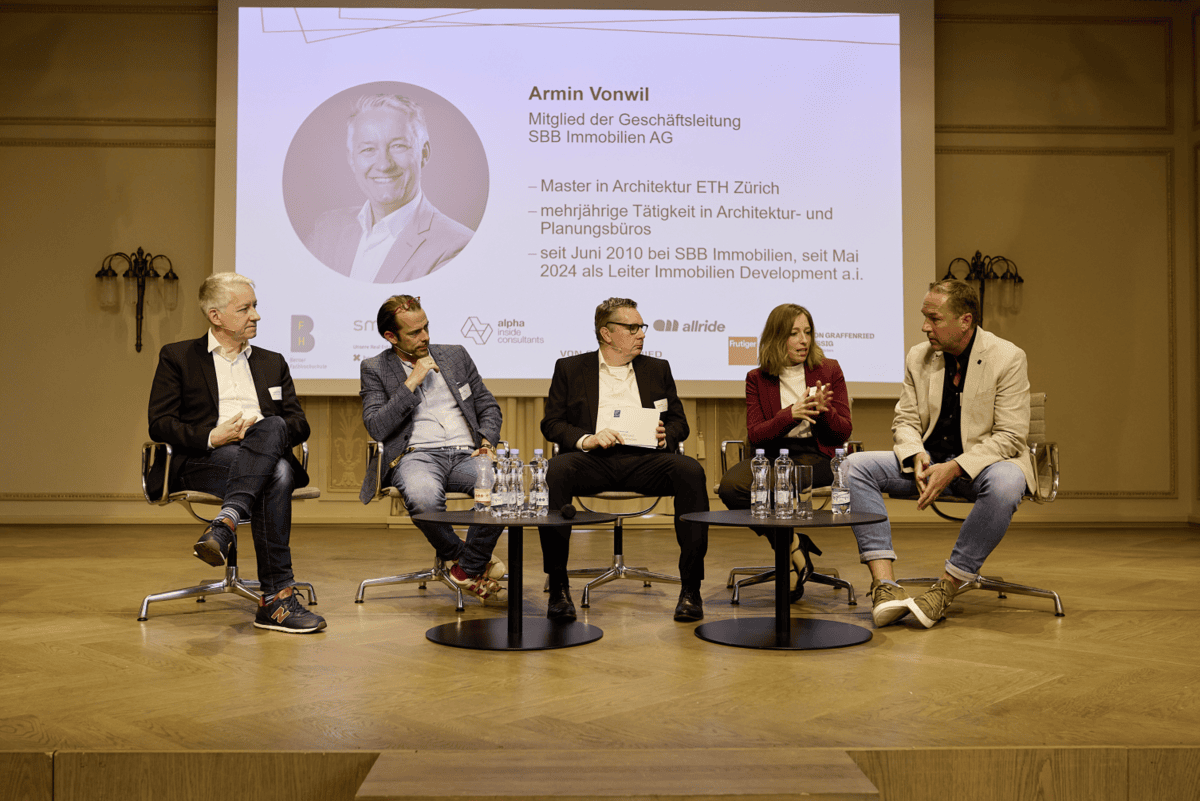
Speaking of suffering: moderator Björn Zern drew attention to an important aspect of the final discussion that is sometimes overlooked: there is not a housing crisis everywhere in Switzerland. Away from the big cities, the situation is different. Which raises the question for Zern: Wouldn't it make sense to create the urbanity that people are looking for these days outside of the big centers? This turned out to be an idea that everyone could agree with. Of course, it doesn't work without infrastructure, but decentralized areas are predestined for densification, Bissig found. And Mettler confessed: Decentralization had virtually become part of the strategy for his company. Especially as political resistance is often much weaker in the periphery than in cities such as Geneva or Zurich. The approval process is also better there, said Mettler, who was not overly full of praise for the political processes in his presentation.
The debate was exciting, and it could have been even more exciting, as Zern summed up, if politicians had also been represented on the panel. But there could be an opportunity for this at the next real estate discussion in Bern.








